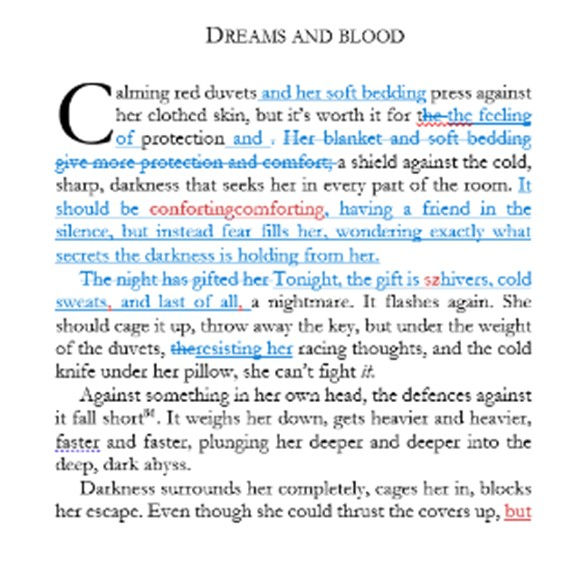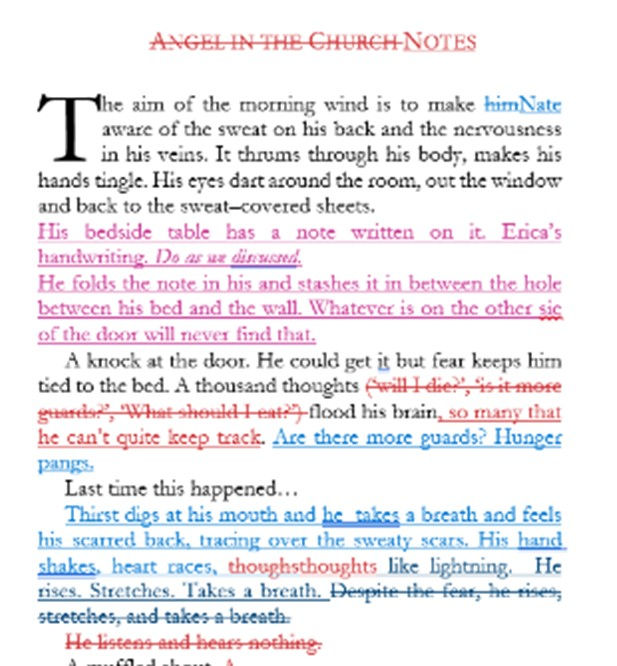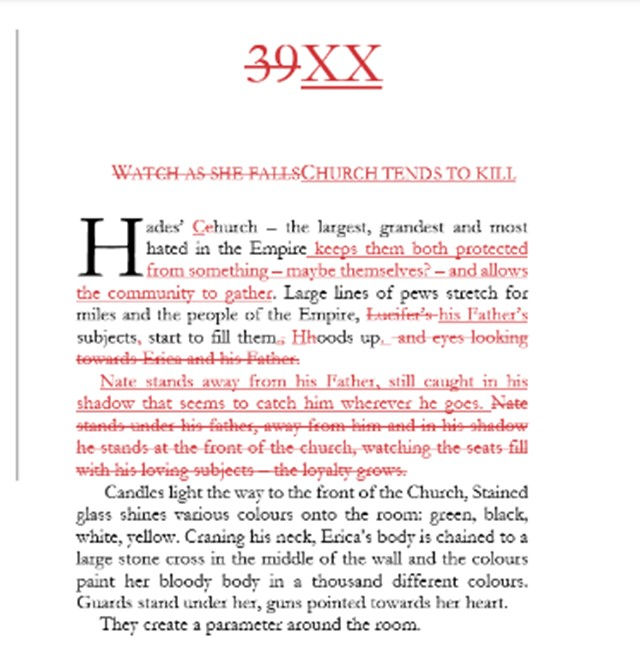The first failure, religion and word choices
- Erica J Kingdom

- Jun 30, 2023
- 5 min read
Without giving the whole game away, there isn’t too much I can tell you about these chapters as we’re building up towards the climax. I want to be able to show you some of my favorite scenes from this section and give you a little bit of an insight into why these scenes in this section are important and what I’ve got to teach you from these, as I really enjoyed doing it.
The first failure

This scene is really important to me as I feel like it gives the stereotypical idea of the ‘first failure’. I once read a piece of writing advice which inspired me to write this scene, that went along the lines of ‘if a plan fails, show us how it fails. If a plan succeeds, show us it unfolding’. If I find where the piece of advice is, I will link to it here. I wanted to build a lot of tension in this scene with so much on the line for the pair. I wanted to contrast the daybreak with the anger of their conversation, even if I need to describe the room more in this draft. This piece might look slightly different when I press publish, but there is going to be minimal differences and the point of these documentaries is to show you my process. I hope that I’ve got enough of a ‘quick’ flow to this scene. I was writing a play at the time I re-edited this scene and I wanted to make sure that I had a quick ‘back and forth’ between these two characters.

Going back to the ‘first failure’ idea – I wanted to showcase how this plan goes, as the saying goes ‘tits up’ because I felt that in previous drafts that are long-gone I didn’t have enough of a point between the possible successes and possible failures. You’ll have to read the novel to find out if Nate succeeds or fails, as I won’t be telling you that here.
This part is hopefully highlighting the darker tone of the work with the footnote which I want you to read the novel to find out. With the character writing the footnotes, I wanted to try and add a slight dash of humor to a really dark text. I wanted to have a little light in the darkness and allows me to play around with humor and poke fun at the characters and give some information in the world that isn’t needed in I want to highlight that there are hundreds of ways that you can expand your writing without bloating it, for example adding more details about the setting.
Symbolism and word choice

With this scene I was really interested in the idea of bedding being used as a shield against the darkness, as it’s a few things: warm and the duvet can be considered a shield. I wanted to try and put Erica in some form of conflict and as most of her story is made up of overcoming traumatic memories and having a sense of identity.
The theme of darkness is prominent in the novel and is used for a variety of things (that you’ll need to read the novel to find out about). For this part I wanted to try and go as blunt as I could but keep that poetic styling. One of the main issues when editing – as I’m sure you can see – is the need to make everything more active and give the scene of movement that good writing is known for. Every word should move the story forward, even if its connecting two parts of a sentence. There is something to note here about sentence lengths that might be useful for your writing. I wanted to showcase the run-on thoughts Erica is having, so I decided to write in longer, more drawn out sentences. There is, however, a few things that I could cut for clarity sake, the final ‘for her’ might work to make the sentence better and flow easier without the close-quarters repetition. I could also change it to a more active verb: ‘keeping’ or ‘hiding’ could work.
I wanted to include this extract in here because of the lessons it could teach you, as a writer, about word choice. What writers put on the page and what is happening in the character’s reality are two different things. Language choice helps the reader understand what is happening and you should read it out loud to yourself and have someone else read it to help gather how they see it.
Cutting and re-developing scenes

This scene is a mess of color in the editing process. If you have edits in different colors, then please be wary that there might be a few clashes. As I’ve talked about a lot in these Documentary blog posts I want to showcase that I’ve added an introduction to this scene and changed the title. I’ve added this scene and moved ‘Church Tends To Kill’ to the next chapter, which means that I’ve been further able to leave this scene off at a place of tension and better developed this.
I feel like there is merit in splitting scenes up and giving more room to develop each of them instead of writing two scenes in one, as this won’t give you the right type of development. If you need help in developing scenes I’ve got plenty of different resources that might help you out with that.
The note part of the scenes works well as it gives a set up. I could have given a trial for this, but it’s not particularly important to the novel. I could write a short story based on this, though, as I didn’t want to write a scene about the trial, as this isn’t a novel tackling the injustices of the trial and judicial system. I wanted to focus this scene on receiving the note and the turmoil and sense of urgency Nate has with saving her.
Religion in The Burning Throne

I wanted to have a bit of fun with the narrative voice in this scene and you can see a lot of my edits in these screenshots. There is so much you can do with Churches in fiction, use them for a place of community, religion, gathering. As I wrote this novel in a time where I’m coming to understand myself and have a bit of academic and personal knowledge about Christianity, I wanted to take the convention of the Church and flip it on its head. The church, here, I wanted to be a place of sacrifice – of freedom, of something else, but I didn’t want anything horrible to happen on-page. I needed to contrast the regular ideas presented by the Church with something from this twisted hellscape of the Kingdoms. I understood analysis of The Handmaid’s Tale and from that I only gathered a service level understanding of fundamentalism, and from that, I guess, is what I was trying to do. The image of the person with the ‘crown of Thorns’ is prominent of suffering within the New Testament. I wanted to reverse this as its normally, stereotypically, a man being sacrificed, and I wanted to flip that idea in my head. The Guards work as something an I’m sure that someone might write about this text in terms of religion. If you do, I would love to read it!
I hope you’ve enjoyed my analysis and talking about my process behind these chapters in the development of my novel The Burning Throne.



Comments